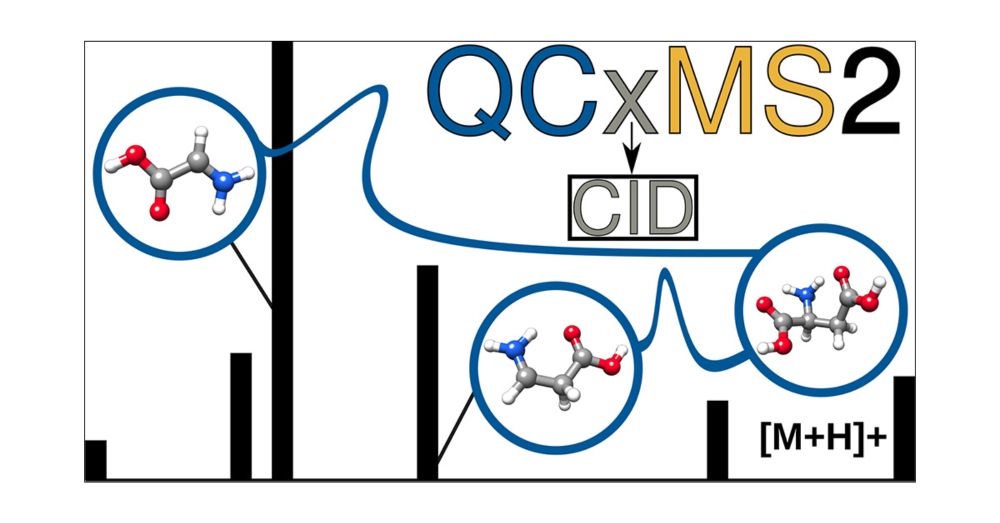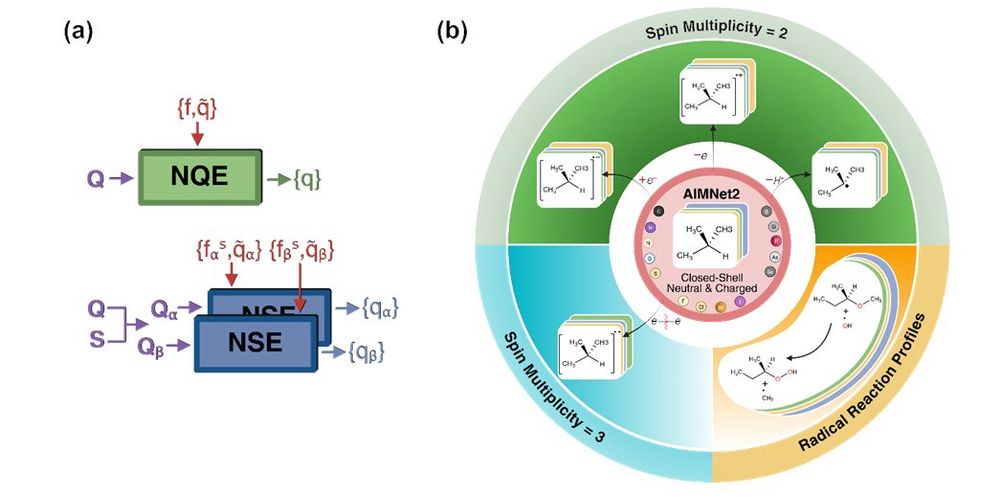
Visit us at www.faccts.de

WEASEL is our smart workflow driver that delivers efficient workflows for complex quantum chemical processes.
Learn more about WEASEL at www.faccts.de/weasel
youtu.be/stYgkMZwi5s
#WEASEL #FACCTs #CompChem #ChemSky
One of WEASELs workflows is IM-CCS prediction which reliably predicts #IMCCS with a MARD of 1.7% (2.9 Å) for a set of 48 molecules.
Check out WEASEL at www.faccts.de/weasel.
#FACCTs #ChemSky #CompChem

Help us realizing a web application for molecular structure and quantum chemical dataset exploration through advanced 2D and 3D visualizations. The full job description is available at:
www.faccts.de/careers/#ope...
#OpenPosition #FrontEnd #CompChem #ChemSky
Help us realizing a web application for molecular structure and quantum chemical dataset exploration through advanced 2D and 3D visualizations. The full job description is available at:
www.faccts.de/careers/#ope...
#OpenPosition #FrontEnd #CompChem #ChemSky
Yesterday, we welcomed around 100 scientists and company representatives to celebrate the World Science Day for Peace and Development at our annual networking event. This year’s focus: young researchers and career opportunities in industry.
#SolvationScience #WorldScienceDay




Yesterday, we welcomed around 100 scientists and company representatives to celebrate the World Science Day for Peace and Development at our annual networking event. This year’s focus: young researchers and career opportunities in industry.
#SolvationScience #WorldScienceDay
doi.org/10.1515/pac-...

doi.org/10.1515/pac-...
#CompChem #ChemSky
doi.org/10.1016/j.dy...

#chemsky #realtimechem #science #comp_chem
1/n
Electronic Structure and Hypercorrole Features of Deprotonated Free-Base and Reduced Copper Corroles | Inorganic Chemistry pubs.acs.org/doi/10.1021/...

#chemsky #realtimechem #science #comp_chem
1/n
Electronic Structure and Hypercorrole Features of Deprotonated Free-Base and Reduced Copper Corroles | Inorganic Chemistry pubs.acs.org/doi/10.1021/...
www.solvation.de/news/resolv-...
#FACCTs #RESOLV #WorldScienceDay25 #ScienceMeetsIndustry #Innovation

www.solvation.de/news/resolv-...
#FACCTs #RESOLV #WorldScienceDay25 #ScienceMeetsIndustry #Innovation
WEASEL is our smart workflow driver that delivers efficient workflows for complex quantum chemical processes.
Learn more about WEASEL at www.faccts.de/weasel
youtu.be/stYgkMZwi5s
#WEASEL #FACCTs #CompChem #ChemSky

WEASEL is our smart workflow driver that delivers efficient workflows for complex quantum chemical processes.
Learn more about WEASEL at www.faccts.de/weasel
youtu.be/stYgkMZwi5s
#WEASEL #FACCTs #CompChem #ChemSky
Check out the GDCh article (doi.org/10.1002/nadc...) or our work (doi.org/10.1002/jcc....)!
#compchem #quantumchemistry

Check out the GDCh article (doi.org/10.1002/nadc...) or our work (doi.org/10.1002/jcc....)!
#compchem #quantumchemistry
🔗 Details: www.langresearch.org/open-phd-fel...
Please share!
#PhDposition #CompChem
🔗 Details: www.langresearch.org/open-phd-fel...
Please share!
#PhDposition #CompChem
Highlights include support for constraints for geometry optimizations, tweaking bond lengths when changing elements, and more...
discuss.avogadro.cc/t/avogadro-1...
Highlights include support for constraints for geometry optimizations, tweaking bond lengths when changing elements, and more...
discuss.avogadro.cc/t/avogadro-1...
Join our team to learn more about ORCA and its new Python interface, OPI. Don’t miss Christoph Riplinger’s talk on Tuesday at 15:45.
We’re looking forward to discussing great science with many of you!
#ORCAqc #ORCA #CompChem #QuantumChem #ChemSky

Join our team to learn more about ORCA and its new Python interface, OPI. Don’t miss Christoph Riplinger’s talk on Tuesday at 15:45.
We’re looking forward to discussing great science with many of you!
#ORCAqc #ORCA #CompChem #QuantumChem #ChemSky
#ORCAqc #ORCA6 #massspectrometry #CID #CompChem #ChemSky #CompChemSky
Just published in #JASMS : doi.org/10.1021/jasms.5c00234
Grateful to my coauthors Stefan Grimme @grimmelab.bsky.social & Marianne Engeser @unibonn.bsky.social - this is the last project of my PhD and completes my work on QCxMS2!
#MassSpec #compchem

#ORCAqc #ORCA6 #massspectrometry #CID #CompChem #ChemSky #CompChemSky
We present MindlessGen, an open-source tool for generating chemically diverse "mindless" molecules, and the MB2061 benchmark set with high-level reference data to test methods on unconventional systems.
doi.org/10.1021/acs....

We present MindlessGen, an open-source tool for generating chemically diverse "mindless" molecules, and the MB2061 benchmark set with high-level reference data to test methods on unconventional systems.
doi.org/10.1021/acs....
#QBICVII #CompChemSky #ChemSky #ORCAqc #ORCA

#QBICVII #CompChemSky #ChemSky #ORCAqc #ORCA
doi.org/10.1021/acs....
#ORCA #ORCAqc #CompChem #QuantumChem #TheoChem #CASSCF

doi.org/10.1021/acs....
#ORCA #ORCAqc #CompChem #QuantumChem #TheoChem #CASSCF
doi.org/10.1021/jacs...
ORCA: www.faccts.de/orca/
#ORCAqc #ORCA #Catalysis #CompChem #QuantumChem

doi.org/10.1021/jacs...
ORCA: www.faccts.de/orca/
#ORCAqc #ORCA #Catalysis #CompChem #QuantumChem
#compchem #PCET #catalysis #ORCA
doi.org/10.1021/acso...

#compchem #PCET #catalysis #ORCA
doi.org/10.1021/acso...
chemrxiv.org/engage/chemr...

chemrxiv.org/engage/chemr...
doi.org/10.1039/D5CP...
www.faccts.de/docs/orca/6....
#ORCAqc #CompChem #QuantumChem #ChemSky #DFT

doi.org/10.1039/D5CP...
www.faccts.de/docs/orca/6....
#ORCAqc #CompChem #QuantumChem #ChemSky #DFT
doi.org/10.1016/j.ce...
Calculation of atomic polarizabilities with ORCA 6.1:
www.faccts.de/docs/orca/6....
#ORCAqc #Solvation #CompChem #openCOSMORS
doi.org/10.1016/j.ce...
Calculation of atomic polarizabilities with ORCA 6.1:
www.faccts.de/docs/orca/6....
#ORCAqc #Solvation #CompChem #openCOSMORS




